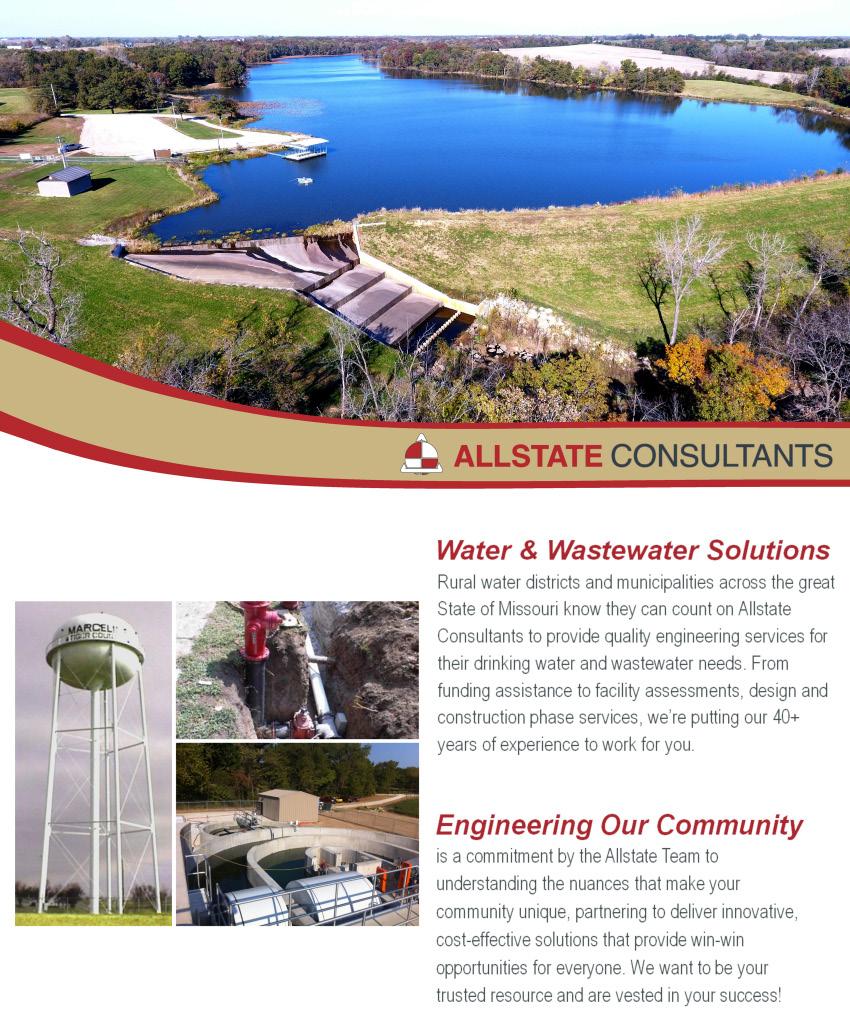
12 minute read
A 30 Year Rural Water Journey and Success Story
le O Julie Marks, PE, Allstate Consultants#er Creek Reservoir: A 30 Year Rural Water Journey and Success Story Julie Marks, PE, Allstate Consultants
Advertisement
er 30 years of hard work and determinaGon, the end is in sight for Caldwell County residents plagued by water supply uncertainty and scarcity. ConstrucGon began this spring on the Li#le O#er Creek Reservoir (LOCR) located 3 miles east of Hamilton, just south of Highway 36. The $26 million dollar reservoir will provide 1.24 million gallons of water per day for Caldwell County, meeGng the 50-year projected demand which will help sustain populaGon and promote economic growth in the vicinity. In addiGon to water supply needs, it will serve as a recreaGonal venue for approximately 60,000 annual user-days as well as help reduce the agricultural and infrastructure damage from flooding downstream of Li#le er Creek. The reservoir is expected to posiGvely impact local businesses and the over 9,000 residents of Caldwell County. The dam will be 81 feet tall and 2,400 feet long. Water at the dam will be about 60 feet deep and the reservoir will have 9.3 miles of shoreline. The 344-acre reservoir will be slightly larger than the 205-acre Li#le Dixie Lake in Columbia, MO, but much smaller than the 1,600-acre Clearwater Lake near Piedmont, MO. The need for a new water supply source in Caldwell County is undeniable. Studies show that nearly 100% of Caldwell County is suscepGble to severe drought and unreliable water sources. During a recent drought, Caldwell County water usage was so severely restricted that water could not be used to water livestock. Area farmers were considering slaughtering their ca#le when the desperately needed rains arrived. Digital models esGmate that if another record drought were to occur, the exisGng water sources could only supply approximately 37% of the water needed. This restricts the ability of local farms and businesses to expand and encourages new businesses to build their faciliGes elsewhere. The water issues in northern Missouri are a result of unfortunate geology. Many communiGes in other areas of Missouri obtain their water from large rivers and may supplement their water supplies with groundwater. Other communiGes primarily use groundwater and may use surface Pictured: Hamilton Reservoir with approx. 1 month of water supply remaining water to supplement their water supplies. Unfortunately, in Caldwell County, large surface water sources are not available. In addiGon, the use of groundwater as a primary or secondary source of drinking water is not feasible because the underlying geologic formaGons severely limit and impair groundwater quality and availability. Shallow wells that are drilled yield li#le water, and deeper wells either yield li#le water, or yield water high in sulfate, chloride, and total dissolved solids. TreaGng water of such poor quality is costly for water treatment plants and places an addiGonal economic burden on a community with a poverty rate above the state average. Many challenges had to be overcome before construcGon could begin. The suitability of exisGng sources of surface water and groundwater were evaluated and the feasibility of developing new surface water or groundwater sources was invesGgated. Then the best locaGon for a mulGpurpose reservoir had to be
Li>le O>er Creek Reservoir drawing. Picture courtesy of Allstate Consultants
After 30 years of hard work and determination, the end is in sight for Caldwell County residents plagued by water supply uncertainty and scarcity. Construction began this spring on the Little Otter Creek Reservoir (LOCR) located 3 miles east of Hamilton, just south of Highway 36. The $26 million dollar reservoir will provide 1.24 million gallons of water per day for Caldwell County, meeting the 50-year projected demand which will help sustain population and promote economic growth in the vicinity. In addition to water supply needs, it will serve as a recreational venue for approximately 60,000 annual user-days as well as help reduce the agricultural and infrastructure damage from flooding downstream of Little Otter Creek. The reservoir is expected to positively impact local businesses and the over 9,000 residents of Caldwell County. Little Otter Creek Reservoir drawing. Picture courtesy of Allstate Consultants
The dam will be 81 feet tall and 2,400 feet long. Water at the dam will be about 60 feet deep and the reservoir will have 9.3 miles of shoreline. The 344-acre reservoir will be slightly larger than the 205-acre Little Dixie Lake in
Columbia, MO, but much smaller than the 1,600-acre
Clearwater Lake near Piedmont, MO.
The need for a new water supply source in Caldwell
County is undeniable. Studies show that nearly 100% of Caldwell County is susceptible to severe drought and unreliable water sources. During a recent drought,
50
Caldwell County water usage was so severely restricted that water could not be used to water livestock. Area farmers were considering slaughtering their cattle when the desperately needed rains arrived. Digital models estimate that if another record drought were to occur, the existing water sources could only supply approximately 37% of the water needed. This restricts the ability of local farms and businesses to expand and encourages new businesses to build their facilities elsewhere. The water issues in northern Missouri are Pictured: Hamilton Reservoir with approx. a result of 1 month of water supply remaining unfortunate geology. Many communities in other areas of Missouri obtain their water from large rivers and may supplement their water supplies with groundwater. Other communities primarily use groundwater and may use surface water to supplement their water supplies. Unfortunately, in Caldwell County, large surface water sources are not available. In addition, the use of groundwater as a primary or secondary source of drinking water is not feasible because the underlying geologic formations severely limit and impair groundwater quality and availability. Shallow wells that are drilled yield little water, and deeper wells either yield little water, or yield water high in sulfate, chloride, and total dissolved solids. Treating water of such poor quality is costly for water treatment plants and places an additional economic burden on a community with a poverty rate above the state average. Many challenges had to be overcome before construction could begin. The suitability of existing sources of surface water and groundwater were evaluated and the feasibility of developing new surface water or groundwater sources was investigated. Then the best location for a multipurpose reservoir had to be studied. Meanwhile, the Caldwell County Lake Project Steering Committee was working to
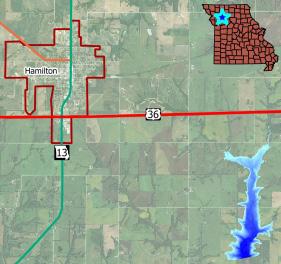
grow community and legislative support for the project. These efforts culminated in the Natural Resources Conservation Services (NRCS) designing a multipurpose reservoir in the Little Otter Creek watershed that would provide much-needed drinking water, reduce flood impacts along Little Otter Creek, and provide recreational activities for the area.
Funding the $26M LOCR project was also no easy task. The planning, engineering, and construction of the LOCR project required funding from several sources. Federal funds were secured from the USDA-Natural Resources Conservation Service through the Watershed Protection and Flood Prevention Program (PL 83-566), which paid 100% of the planning and engineering cost, and 58.1% of the construction costs. Additional support came from the State of Missouri in the form of direct appropriations and through the Missouri Department of Natural Resources’ Multipurpose Water Resources Fund. Finally, local funds were generated from county-issued bonds and a local Caldwell County ½ % sales tax. Together, these resources were combined to bring the project to reality.
Of course, there were environmental concerns that had to be addressed. Potential environmental impacts were extensively reviewed in an Environmental Impact Statement originally published in 2003 and then supplemented in 2019. The Final Supplemental Environmental Impact Statement and the resulting Record of Decision were the final steps in the completion of the National Environmental Policy Act (NEPA) requirements for the project. While it was determined that no federally threatened or endangered species, and no state endangered species, were present, studies did reveal that installation of the Little Otter Creek Reservoir would result in unavoidable temporary and permanent
Chloramination Monitoring You Can Rely On
MCX™ Monochloramine Analyzer 888-534-4708 | watts.com/mcx impacts to jurisdictional waters of the U.S. An individual 404 permit was approved in October 2020 and included the requirement for compensatory mitigation for adverse impacts to approximately 36,243 linear feet of stream and 4.1 acres of jurisdictional wetlands.

Mitigation for the Little Otter Creek Reservoir project includes implementing measures designed to reduce undesirable environmental effects as well as funding activities that will offset unavoidable ecological impacts. The Little Otter Creek Reservoir project contributed funds to help complete projects that restore wetlands, riparian forests, streams, and prairies in Missouri and provide conservation education opportunities. In addition to funding these projects, the Little Otter Creek project will complete four Aquatic Organism Passageway (AOP) projects. These AOP’s will remove barriers to the movement of aquatic organisms through and between bodies of water by replacing four low-water culvert crossings with bridges designed to allow aquatic organisms to move through these areas more readily. The culverts were generally perched above the stream bed

Old Hauns Mill Bridge
(continued on page 56)
Manufacturer’s Representative for Water & Wastewater Treatment Equipment
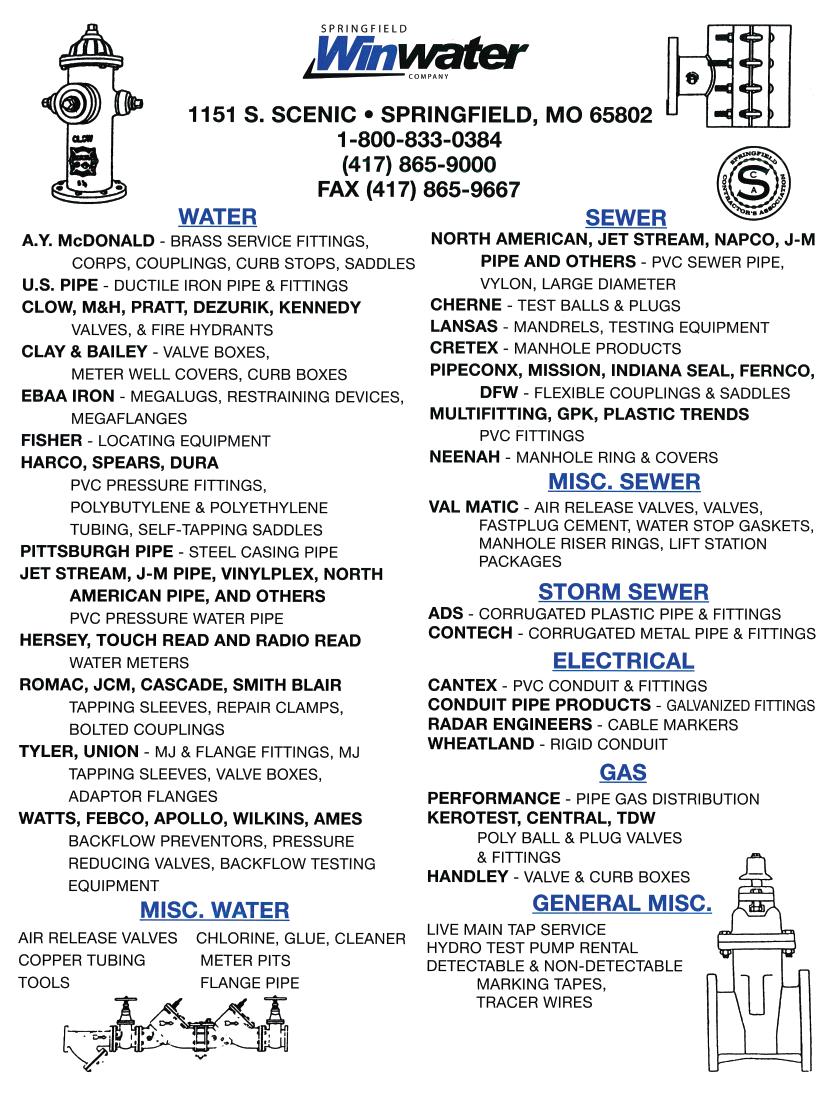






Replacement Hauns Mill AOP Bridge
at the downstream end. The bridges will have rip-rap grade controls to maintain current stream bed elevations upstream of the crossings. The existing crossings were generally in poor condition and needed replacement from a traffic continuity and safety perspective. Additional benefits will be that the new bridges are designed to span the streams, reduce the risk of bridge overtopping or failure during flooding events, and reduce maintenance costs. The improved fish passage may also increase populations of other wildlife that depend on fish for food. To date, one AOP has been completed, one is nearing completion, and the other two will be completed by spring 2023. The reservoir team appreciates regulators working with them to find value-added mitigation opportunities that meet the permit requirements and replace outdated infrastructure.

The Little Otter Creek Reservoir is a multipurpose reservoir and has the potential for many recreational amenities. Recreational planning assistance has been provided through the Rivers, Trails, and Conservation Assistance (RTCA) Program with the National Park Service. With the assistance of RTCA, many stakeholder engagement meetings have been held to capture the community’s vision for recreational needs and a conceptual recreational master plan has been developed. There are possibilities for fishing jetties, trails, boat ramps, restrooms, parking, disc golf course, camping, docks, a butterfly park, as well as others. It will be many years before many of these recreational plans can be funded and completed, and some of the plans may never reach fruition.
The next task in the planning stage is developing a source water protection plan. Water sits at the lowest point in the landscape and is susceptible to contamination from a variety of sources throughout the watershed. The Commissioners will be working with engineers and community members to identify potential sources of contaminants and working to find long-term solutions that ensure the highest quality water at the best price.
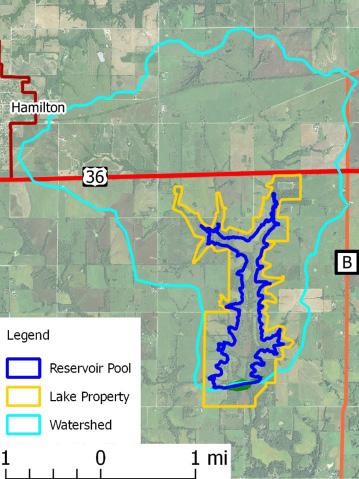
Reservoir construction is set to be complete in the spring of 2024 and the reservoir is projected to be filled with water and ready for use in 2029. During that time, the Little Otter Creek Wholesale Water Commission will continue to work towards funding and constructing the necessary water treatment facilities, water transmission mains, and water distribution system.
After many years of meetings, permitting, and discussions, the Little Otter Creek Reservoir is becoming a reality. This project is an excellent example of collaboration between many different people and government organizations, including citizens of Caldwell County, Caldwell County Commission, NRCS, U.S. Army Corps of Engineers, Missouri Department of Natural Resources, State Legislators, Federal Legislators, Allstate Consultants, Olsson Engineering, Green Hills Regional Planning Commission, National Park Service RTCA, and many others.










TOMCAT CONSULTANTS, LLC & dba T.A.P. Company Portable Hydro-Pneumatic Tanks Tank* Accessories* from 1,000 TO 25,000 Gallons !! Parts * Co. Ph: 573-764-5255 Ph: 573-764-7255
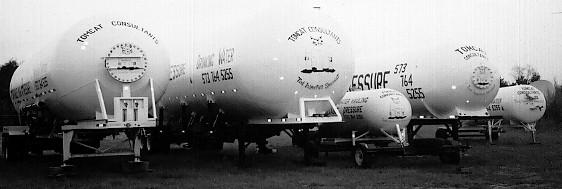
The safest way to maintain positive system pressure while your potable water storage tank is off line for repair or renovation.
WE SPECIALIZE IN THE SANITARY ASPECTS OF WATER STORAGE: * Emergency or Sanitary Inspections & Evaluations * Critical Work-In-Progress Phase Inspections * Writing of Specifications * Short & Long Term Portable Tank Rentals * Consulting on Drinking Water Problems or Issues
E-mails: tapco@fidnet.com or tomcatandtap@yahoo.com Website: www.tomcatconsultants.com Fax: 573-764-6255
Members: Clyde H. Zelch, Tina Keeney, Morgan Zelch, J.W. Zelch
Tank Sanitation Starts With A T.A.P. Co. Vent
OUR PATENTED INSECT/FROST PROOF VENTS ARE DESIGNED TO PROVIDE SIMPLICITY, DURABIITY, SECURITY AND QUALITY. Other items we fabricate include:
Roof Hatches, Ladder Sections, Davit Arms, Pressure Manways, Overflow Discharge Ends (flapgates), Roof Fan Flange Assemblies, Patented Triple Check Circulation Systems & Patent Pending powerMIX Tank Mixing Systems



